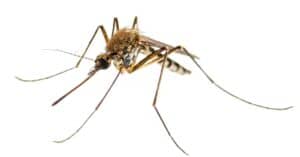Due to the warm, humid weather and swampy landscape in Florida, this state is a hot spot for mosquitoes. More than 80 species of mosquitoes are represented in the Sunshine State, and many of those mosquito types in Florida are vectors for disease. That is why mosquito control is so important.
About $160 million is spent on mosquito control each year. This can range from removing areas of standing water, which is a breeding ground for mosquitoes, to spraying approved insecticides. Let’s talk about the seven most common mosquito types in Florida that are set to invade.
Mosquitoes Types in Florida
Even though mosquitoes are active all year in Florida, their peak season is late spring through the summer. This is when mosquitoes are most dynamic, as they scatter around to find mates after the rain in the evenings. Temperatures are hot, and the environment is the wettest with all the rainfall, making a perfect mix for thriving mosquito populations. Here are some of the mosquito types in Florida to look out for:
Aedes aegypti
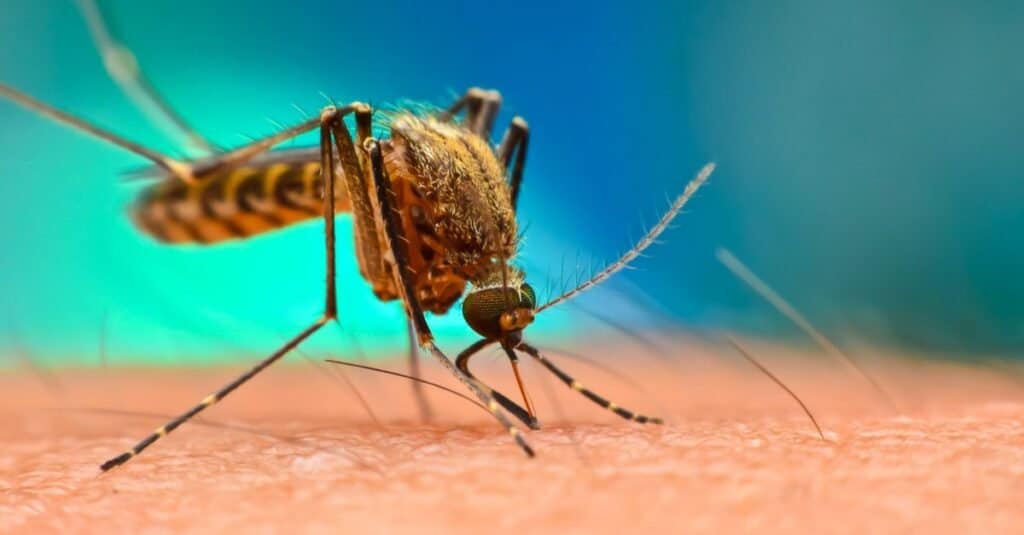
Yellow fever mosquitoes fly low and target ankles.
©Digital Images Studio/Shutterstock.com
Also called the yellow fever mosquito, these mosquitoes fly low to the ground and often target the ankles. Small, dark, and with a white “U” on the top of the thorax, these mosquitoes also have white-striped legs like their relative, Aedes albopictus. They prefer to breed in tree holes and man-made receptacles of water. These mosquitoes are partial to humans, making them spreaders of Yellow Fever, Dengue, Chikungunya, and Zika Virus. They are the most likely type of mosquito to spread diseases.
Aedes albopictus
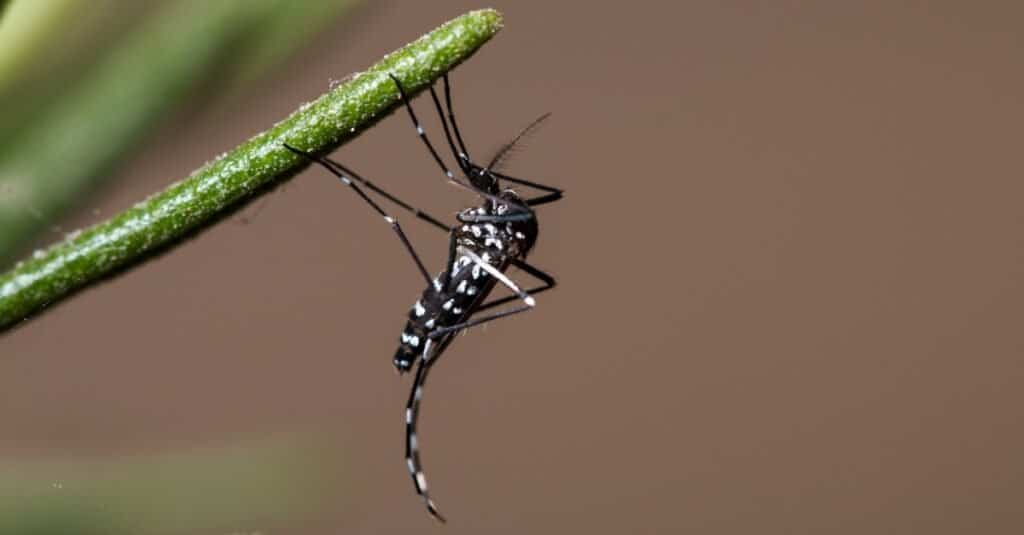
The Asian
tiger
mosquito is responsible for transmitting several diseases, including the West Nile virus.
©Oliver Spiteri/Shutterstock.com
Also called the Asian tiger mosquito, some have surmised that these stowaways came over in a shipment of tires from Asia in 1986. They quickly made Florida home, as the state is the ideal biome for mosquitoes.
You only have to worry about these mosquitoes during the day, as they are inactive at night. Aedes albopictus mosquitoes are dark in color, and a vivid, white line runs down their thorax. They also have similar white stripes on their legs and abdomen. This particular species, out of all the mosquito types in Florida, is known for spreading Yellow Fever, Dengue, Chikungunya, and Zika Virus.
When these mosquitoes lay eggs, female Aedes albopictus mosquitoes find containers of water and lay their eggs above the waterline. Some examples include fountains, vases, barrels, bowls, and any other water storage container. The eggs only need a small amount of water to hatch and can survive for up to eight months without water.
Aedes taeniorhynchus
Nicknamed black salt marsh mosquitoes, they inhabit brackish water, salt flats, and salt marshes. A nasty biter during the day and night, you can identify them by their white striping on the legs and abdomen. These stripes are highlighted by the Aedes taeniorhynchus mosquito’s otherwise dark body. Although it may transmit diseases, it is not a vector of major concern, unlike other mosquito types in Florida.
Females lay their eggs in the open soil when tides are low. After a lot of rain or high tide, the eggs will hatch and develop from larvae to full-grown adults in seven days. However, in the absence of water, Aedes taeniorhynchus eggs can lay dormant for a couple of years.
Anopheles crucians
Anopheles crucians mosquitoes are dark in color and have spotted wings. It appears to have spots because its dark scales are dotted with pale-colored scales. These mosquitoes are medium-sized, but they are primarily defined by their long and fragile legs.
These mosquitoes like to bite at night or in the shade of woods. They are primarily responsible for vectoring Malaria, out of all the mosquito types in Florida. Females lay their eggs on the surface of still water, often in ditches, swamps, and pools of water containing algae. The females gravitate toward acidic water (with a pH of below 7.0) for the development of the larvae.
Culex nigripalpus
This mosquito pops up in late summer. Its body is a flat brown in color and prefers to bite birds. However, they will also bite humans, which is why the Culex nigripalpus is culpable for vectoring the West Nile Virus and St. Louis Encephalitis. They prefer still, freshwater such as marshes, ditches, retention ponds, or man-made poles of water. Females lay their eggs on the surface of the water in little clusters called “egg rafts.”
Psorophora ciliata
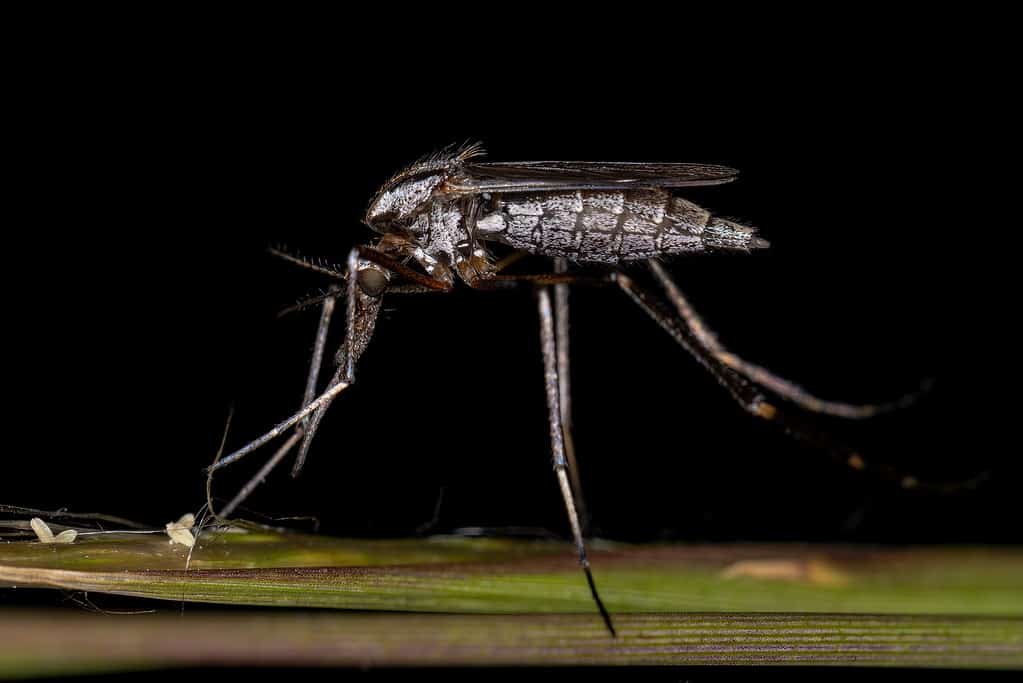
is a large mosquito with a painful bite.
©Vinicius R. Souza/Shutterstock.com
These mosquitoes are Florida’s most problematic biters. Large in size with fuzzy legs, these mosquitoes are persistent, and their bites hurt! They are mostly concentrated in rural areas. Females deposit their eggs in cracks in the soil, and after a cycle of hibernation through winter, these eggs hatch when fields and pastures flood during the rainy season. Their larvae are large and predatory, feasting on other larvae and even their own kind. The good news is that they are not known to vector any diseases.
Psorophora columbiae
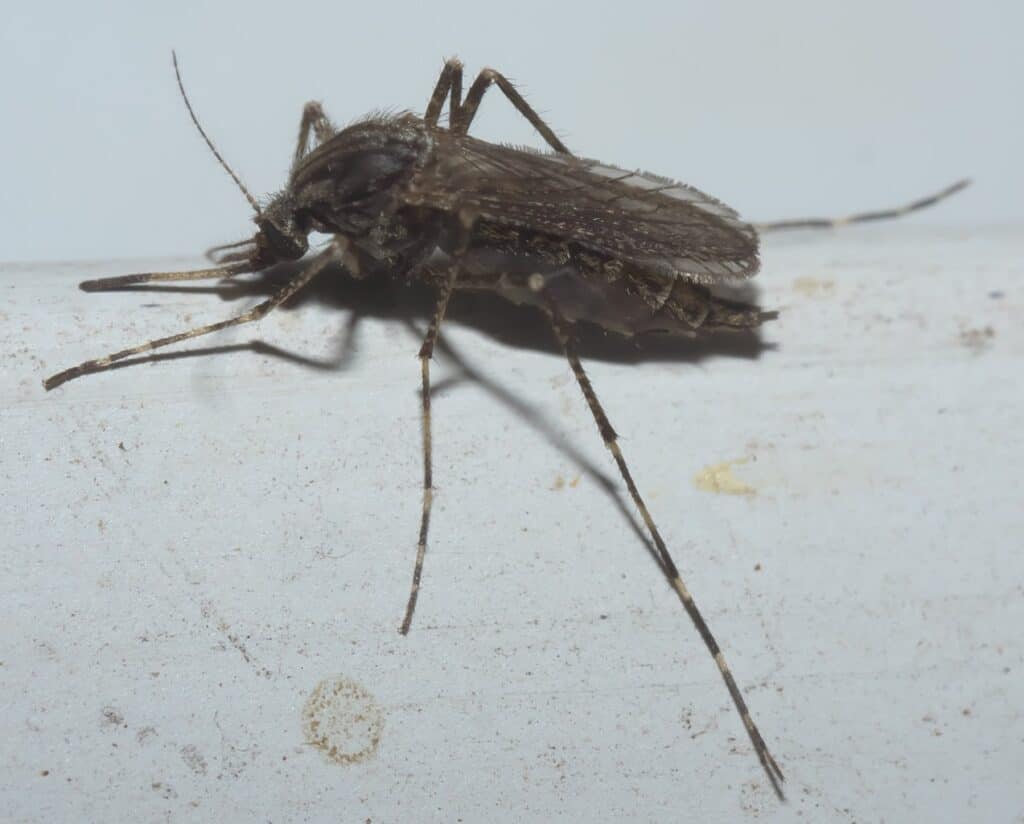
As aggressive as this species of mosquito is,
Psorophora columbiaeisn’t typically a carrier of major diseases.
©xpda / CC BY-SA 4.0 – License
More aggressive than most species of mosquitoes, the Psorophora columbiae will come out to bite at any time. They settle in areas where water pools on open grassy fields or ditches, often outside city areas. Luckily, they aren’t known to spread any major diseases. Females lay their eggs in the dirt of these wet environments, and once it rains, flooding the area, the eggs will hatch. Unfortunately, the eggs hatch all at once. So, they are considered a huge pest to people and livestock in the area.
Summary Table of the Mosquitoes in Florida
| Mosquito Name | Description |
|---|---|
| Aedes aegypti | Also called the yellow fever mosquito. Small, dark, and with a white “U” on the top of the thorax, these mosquitoes also have white-striped legs. They prefer to breed in tree holes and man-made receptacles of water. They are the most likely type of mosquito to spread diseases such as Yellow Fever, Dengue, Chikungunya, and Zika Virus. |
| Aedes albopictus | Dark in color and have spotted wings. These mosquitoes are medium-sized, but they are primarily defined by their long and fragile legs. They like to bite at night or in the shade of woods. They are primarily responsible for vectoring Malaria out of all the mosquito types in Florida. |
| Aedes taeniorhynchus | Nicknamed black salt marsh mosquitoes. They are a nasty biter during the day and night, with white striping on the legs and abdomen. They inhabit brackish water, salt flats, and salt marshes. Although it may transmit diseases, it is not a vector of major concern, unlike other mosquito types in Florida. |
| Anopheles crucians | Dark in color and have spotted wings. These mosquitoes are medium-sized, but they are primarily defined by their long and fragile legs. They like to bite at night or in the shade of woods. They are primarily responsible for vectoring Malaria, out of all the mosquito types in Florida. |
| Culex nigripalpus | Flat brown in color and prefers to bite birds. They will also bite humans, which is why they are culpable for vectoring the West Nile Virus and St. Louis Encephalitis. They prefer still, freshwater such as marshes, ditches, retention ponds, or man-made poles of water. |
| Psorophora ciliata | Florida’s most problematic biters. Large in size with fuzzy legs, their bites hurt! They are mostly concentrated in rural areas. Females deposit their eggs in cracks in the soil, and after a cycle of hibernation through winter, these eggs hatch when fields and pastures flood. |
Other Insects Set to Emerge in Florida
Unfortunately, these mosquito types in Florida aren’t the only insects who relish Florida’s weather. Here are a few other insects Florida can expect.
American Cockroach
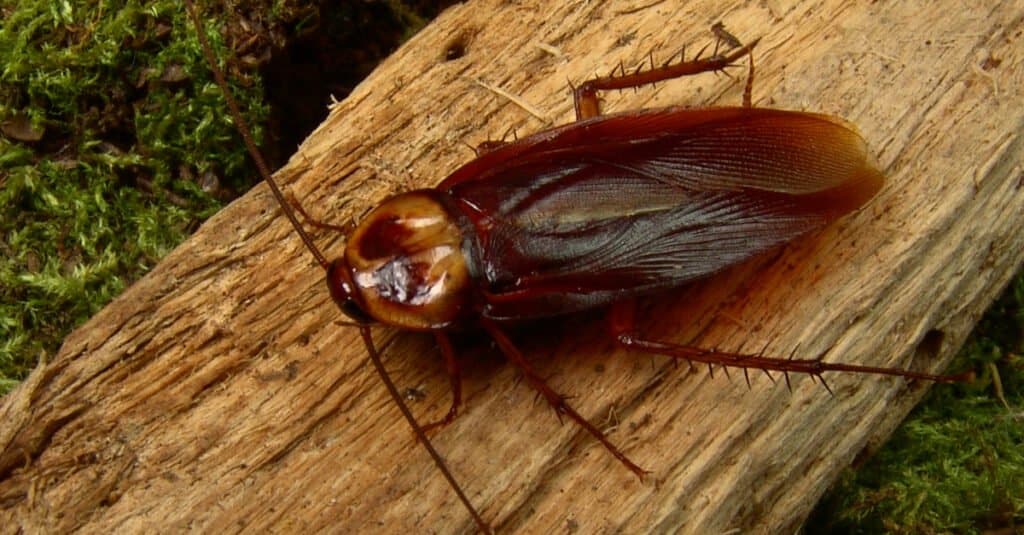
As scavengers, American cockroaches will eat almost anything.
©skifbook/Shutterstock.com
The American cockroach is omnivorous and isn’t too picky when it comes to diet. Any decaying organic matter will do, but like the rest of us, it prefers sugary foods. Because it’s a scavenger, it has been known to eat book bindings, paper, cloth, and dead insects. The American cockroach is problematic because it can spread disease, not to mention interior damage from its regurgitation and waste. Caulking your home well, removing moist habitats from your property (like leaf piles), and keeping garbage effectively sealed will help keep the American cockroach at bay.
Horse Fly

Female
horse
flies bite in order to obtain protein from blood to produce eggs.
©iStock.com/dabjola
Like the mosquito types in Florida, it is the female fly that is responsible for biting you. Females bite humans and animals to obtain enough protein from the blood to produce eggs. The male horse flies, however, are mainly pollen and nectar feeders. Once the females are ready to lay their eggs, they search out rocks or plants near water to deposit the eggs. The larvae hatch from the eggs after only six days. These flies are active during daylight hours and avoid shady areas, so luckily, they are inactive at night.
Cicada Killer Wasp

As frightening as they might appear, cicada killer wasps don’t usually bother humans.
©samray/Shutterstock.com
These wasps are one of the largest wasps in Florida. They only feed on cicadas, and they use their stingers to inject venom into the cicada to paralyze them. Female cicada killers dig impressive tunnels for their young, displacing two or more pounds of dirt in the process! Once the tunnels are built, the female cicada killers prepare cells for their brood, where a female cicada killer will lay an egg with two or three cicadas, before sealing up the cell. When the egg hatches in two to three days, the larva feeds upon the cicadas until pupation.
Although female cicada killers can sting, they rarely do. They aren’t territorial like honeybees or hornets. But, if provoked, they will sting out of self-defense. The male cicada killers are more aggressive, but they don’t have stingers. In general, it’s best to leave the cicada killer alone, as they are helping keep the annual cicada population in check.
In Conclusion
The gorgeous, warm climate this state offers also attracts many mosquito types in Florida. You can read about even more mosquito types here, on the Leon County website. Luckily, the state invests a good amount of money in mosquito control as well as for other pests. Despite the types of mosquitoes and other insects set to invade, many advancements in pest control make Florida a very comfortable place to live.
The photo featured at the top of this post is © Vinicius R. Souza/Shutterstock.com
Thank you for reading! Have some feedback for us? Contact the AZ Animals editorial team.




